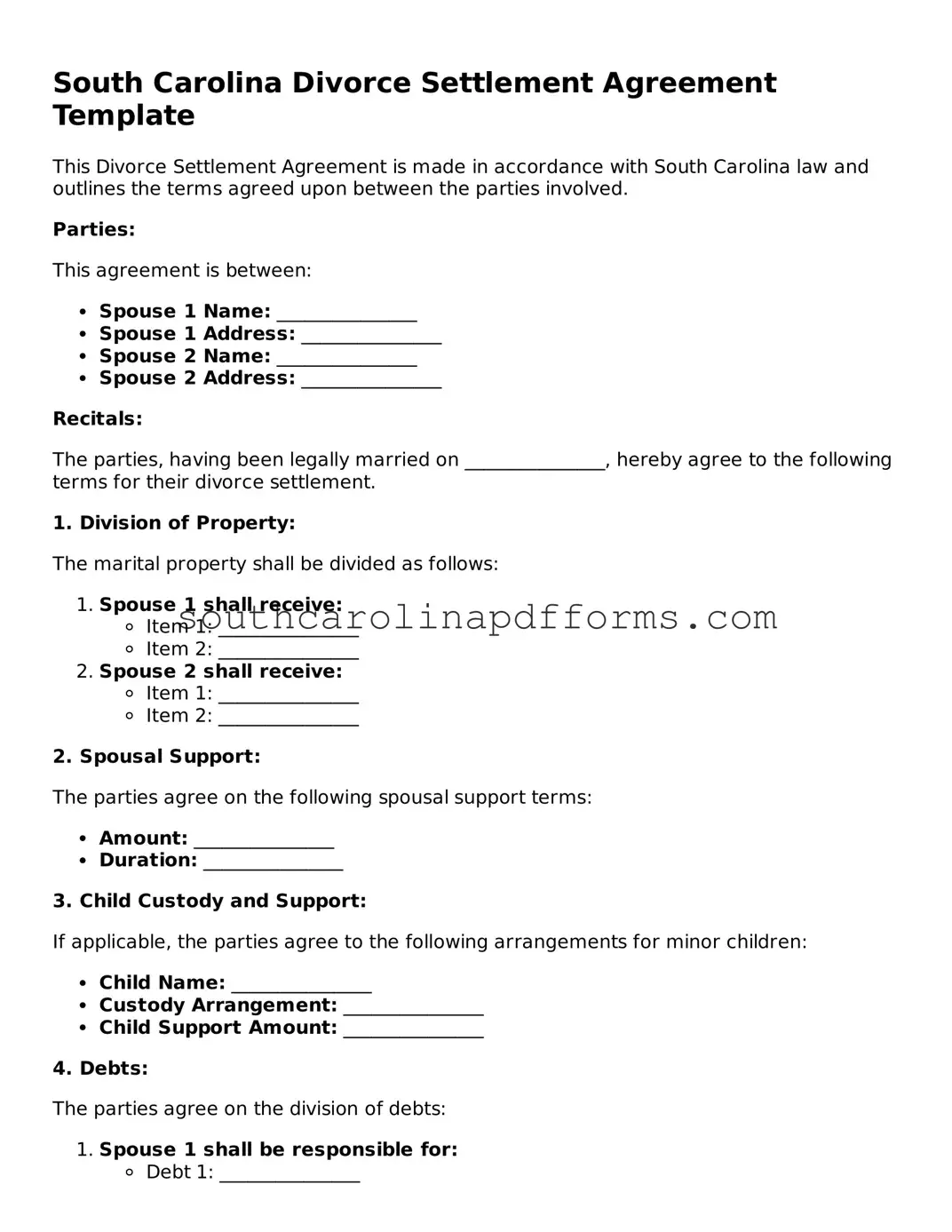Attorney-Approved South Carolina Divorce Settlement Agreement Document
The South Carolina Divorce Settlement Agreement form is a legal document that outlines the terms and conditions agreed upon by both parties during a divorce. This form serves as a comprehensive guide to the division of assets, child custody arrangements, and other pertinent issues, ensuring clarity and mutual understanding. Completing this agreement is a crucial step in finalizing a divorce in South Carolina.
Access Divorce Settlement Agreement Here
